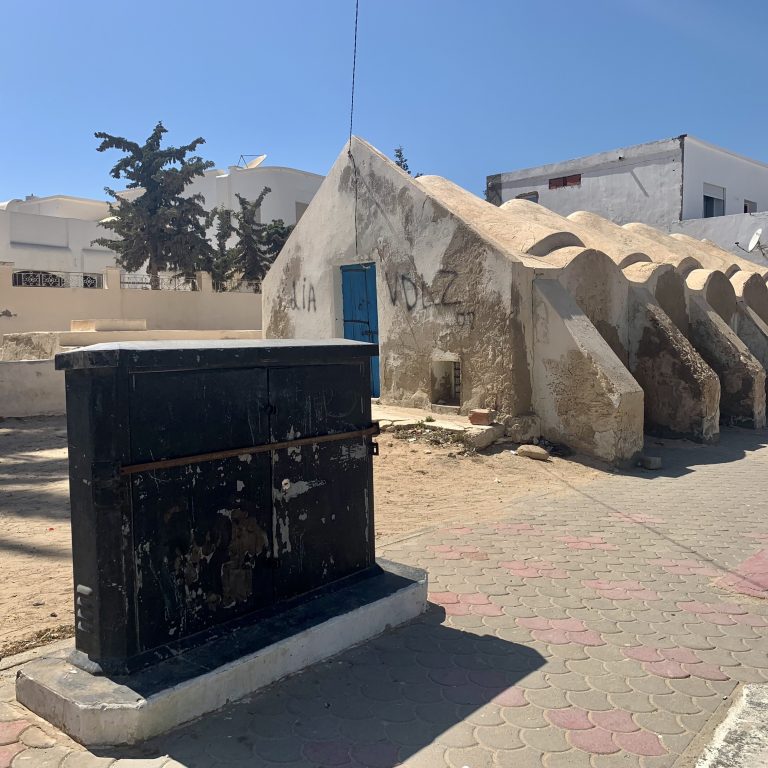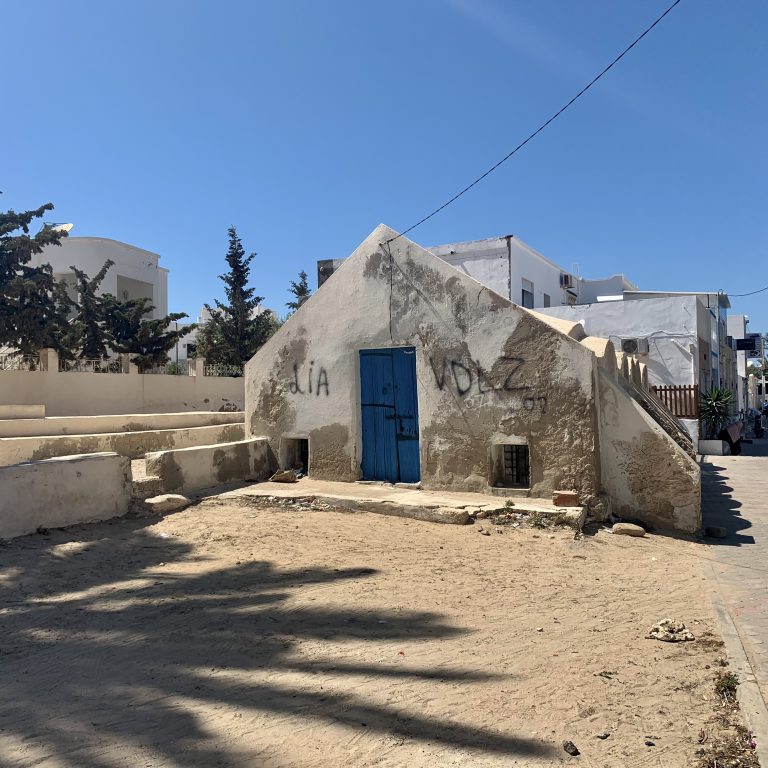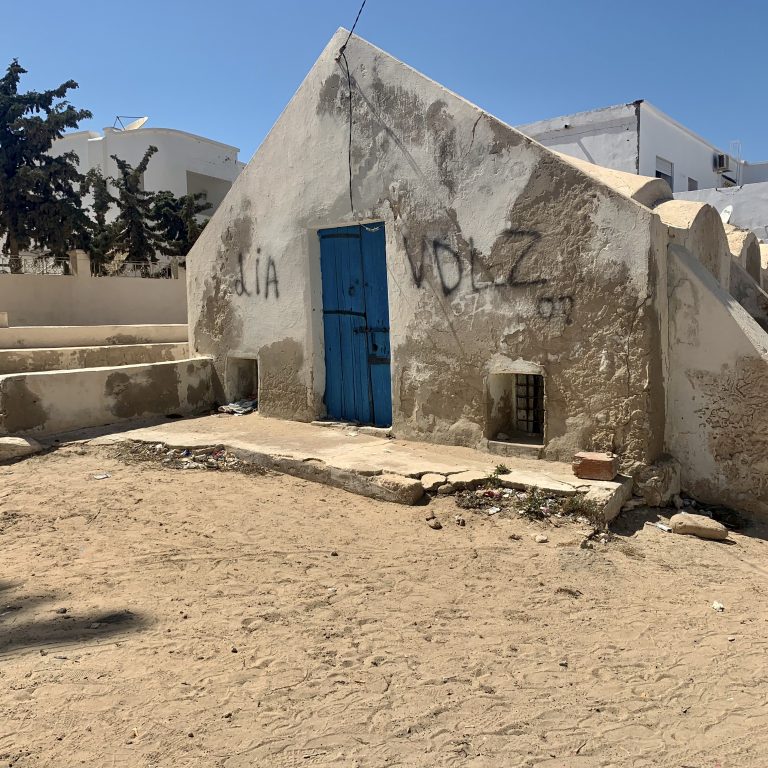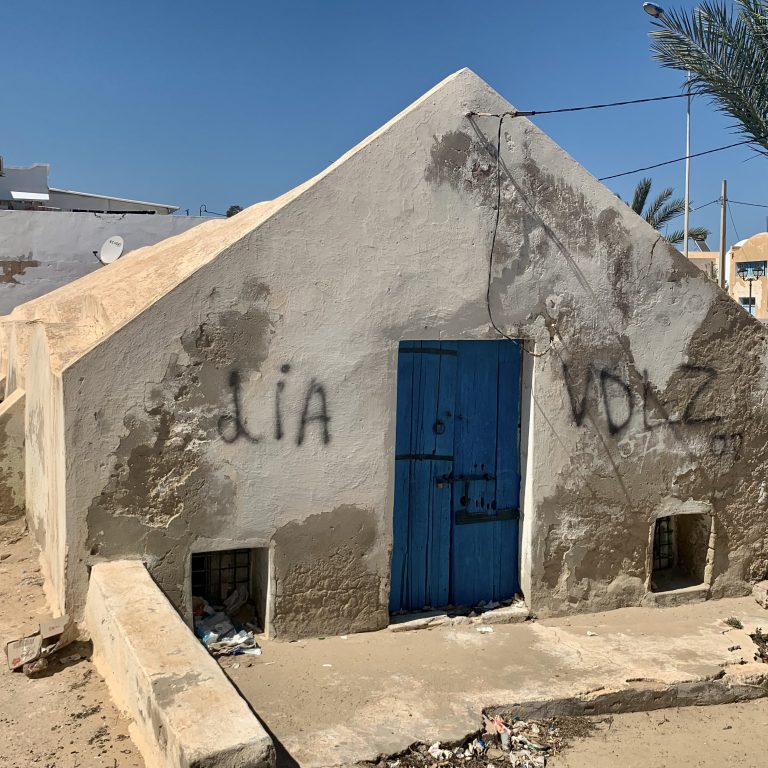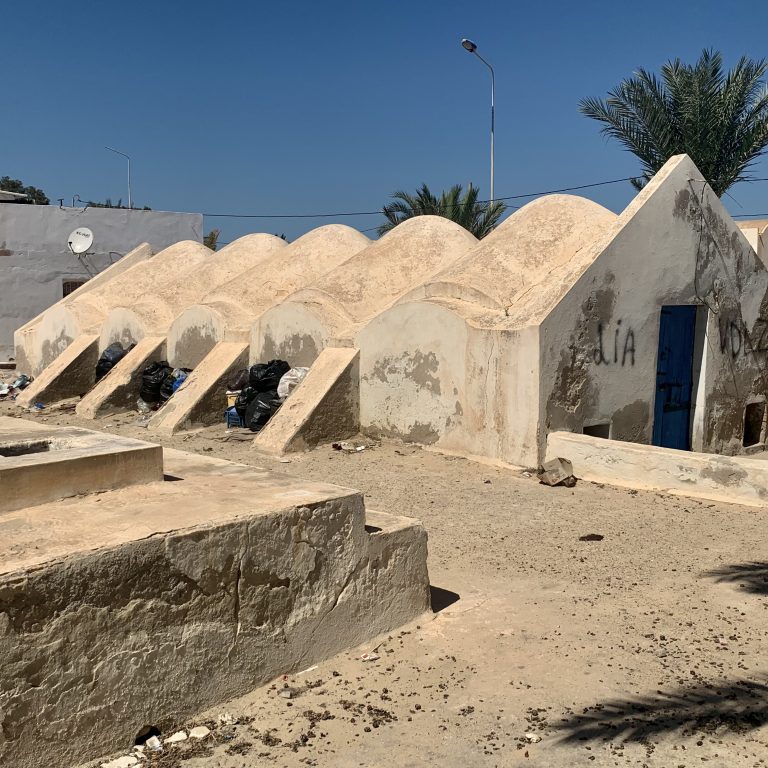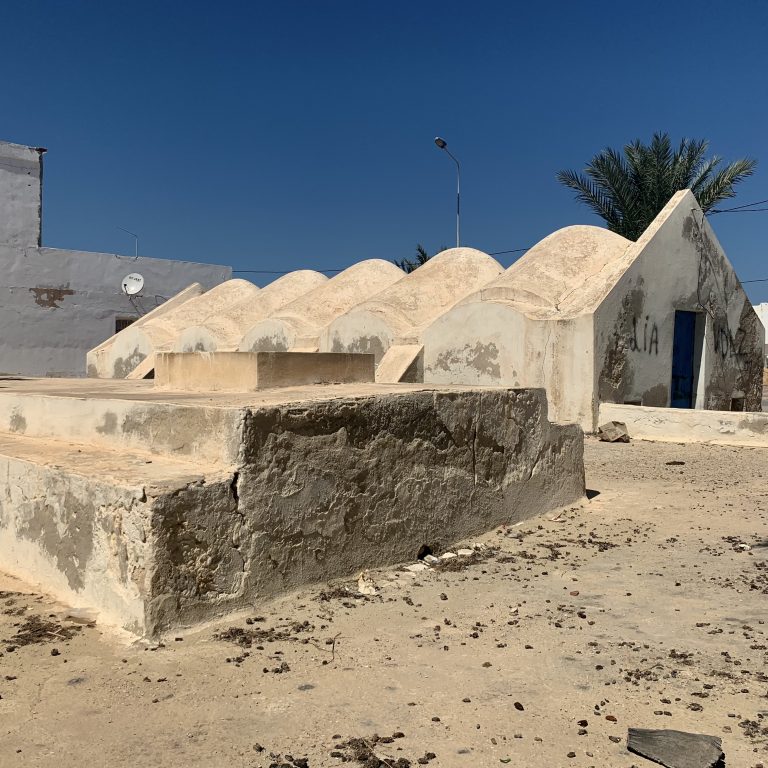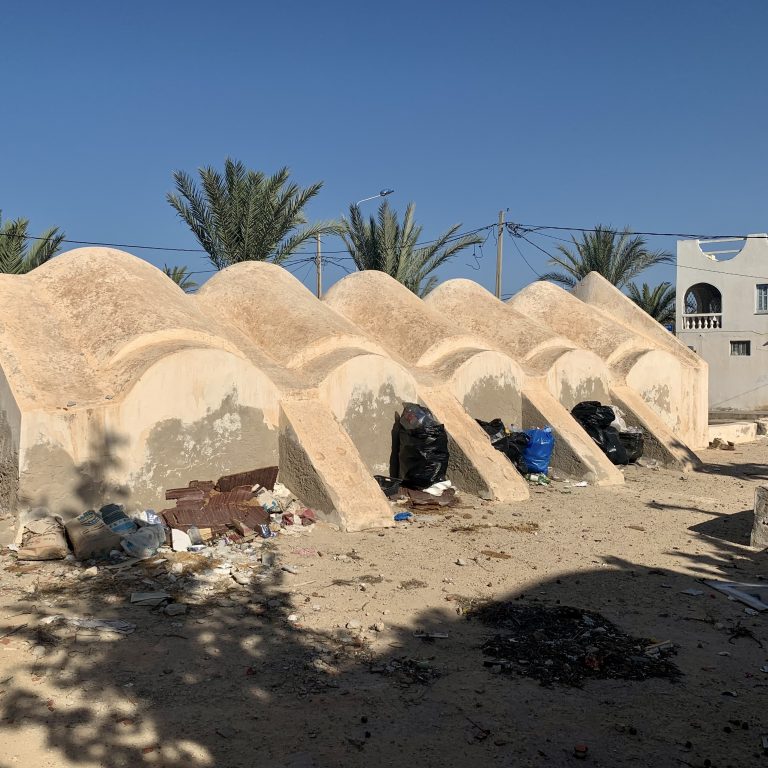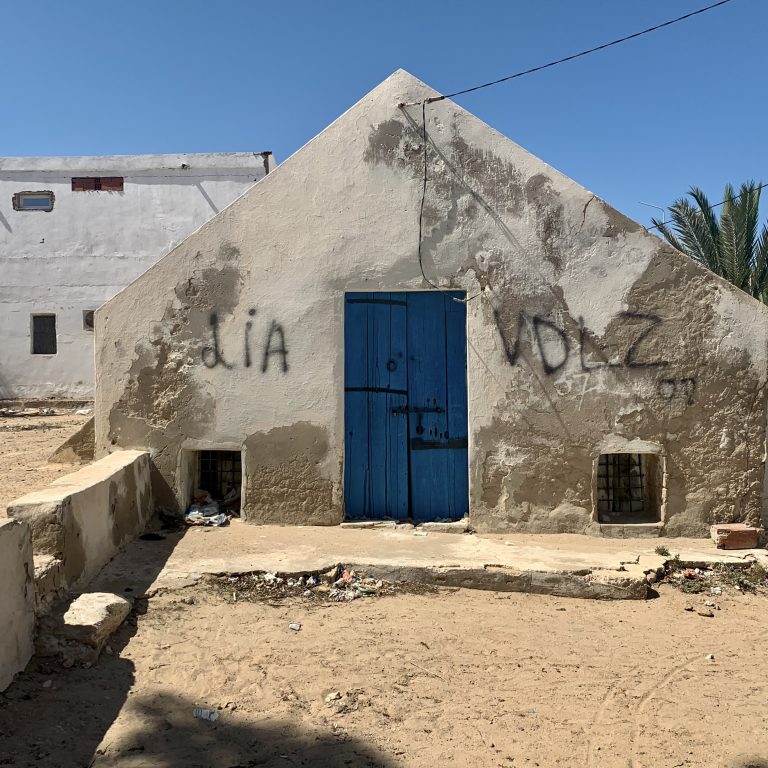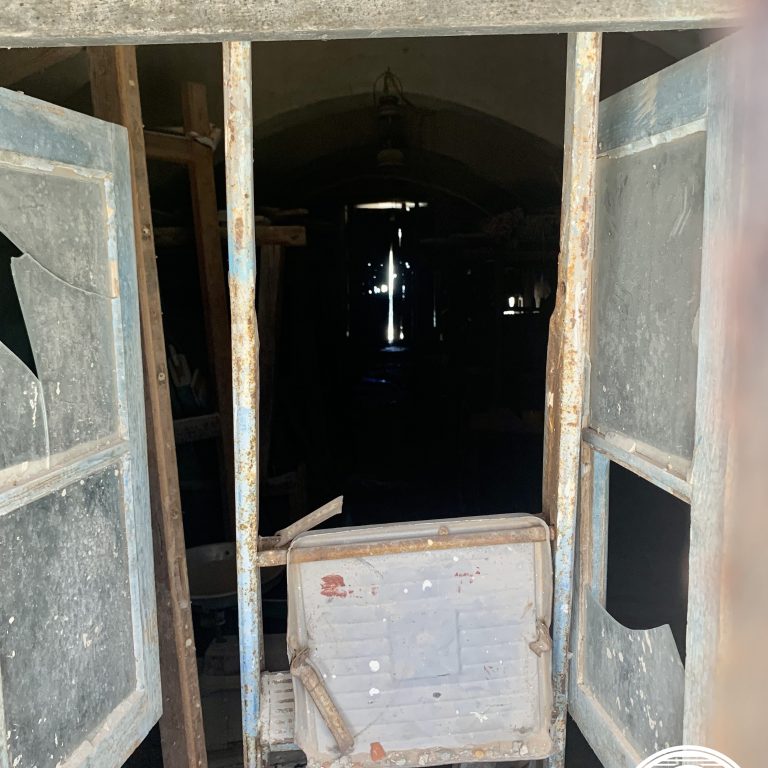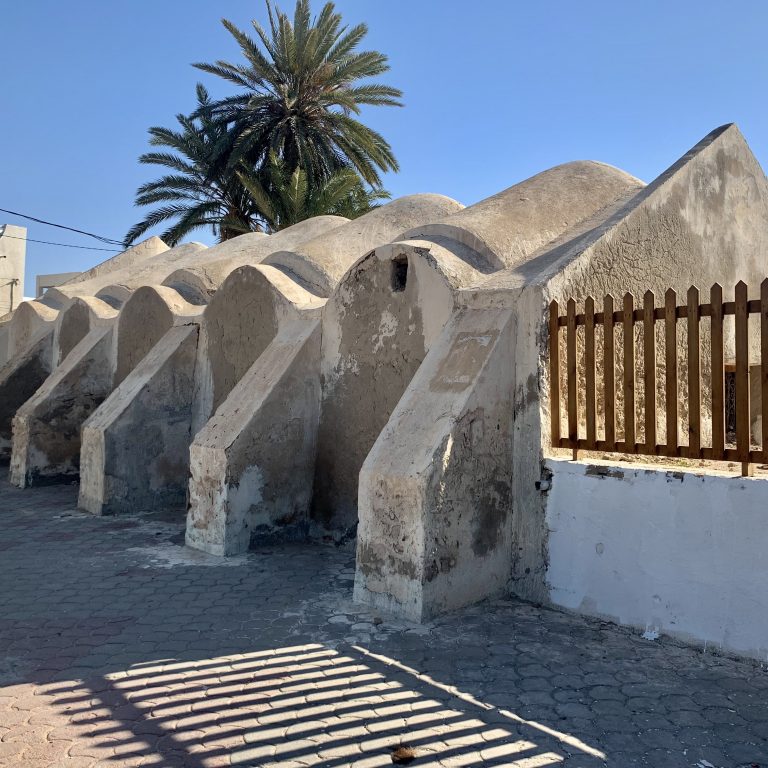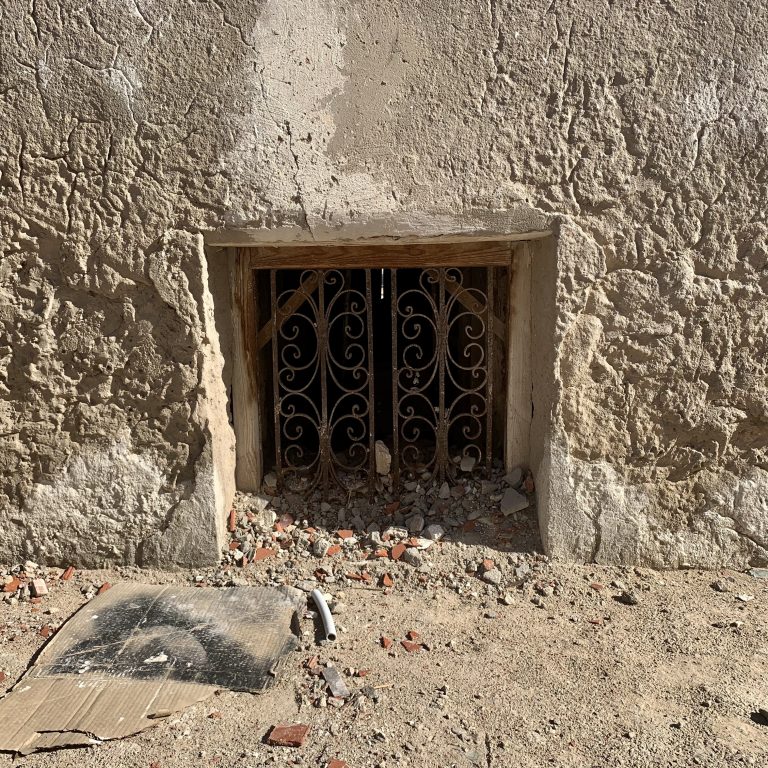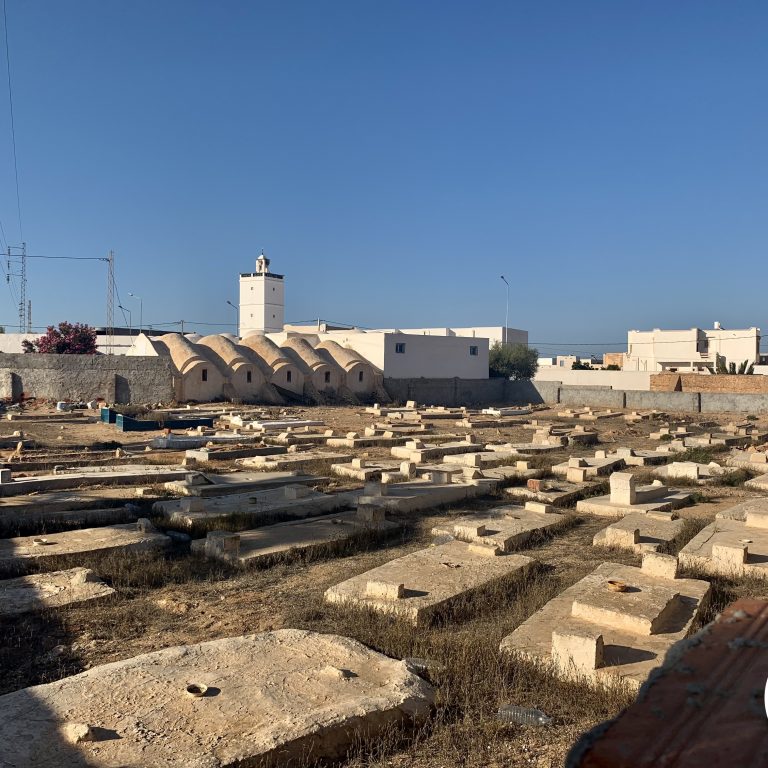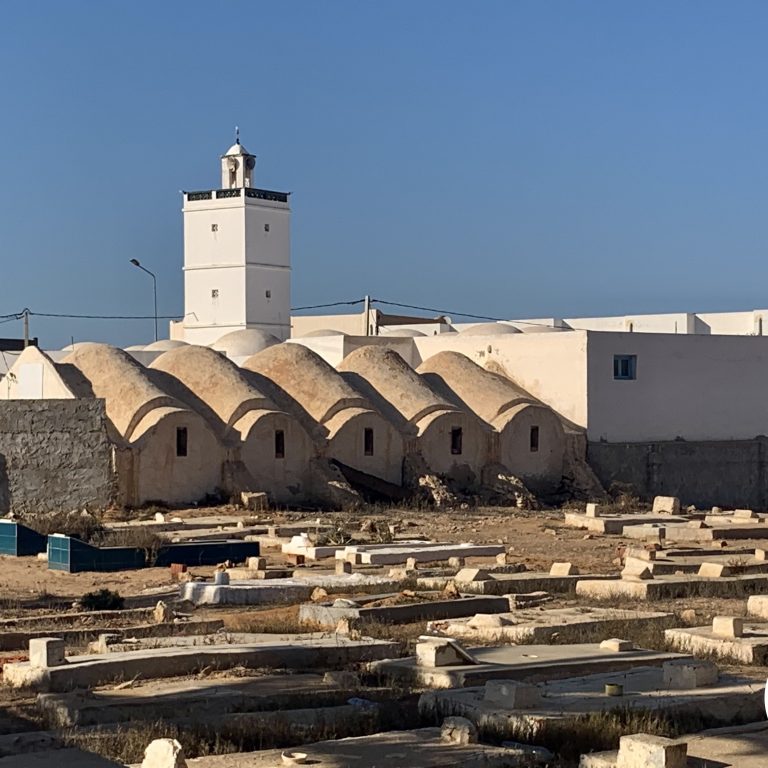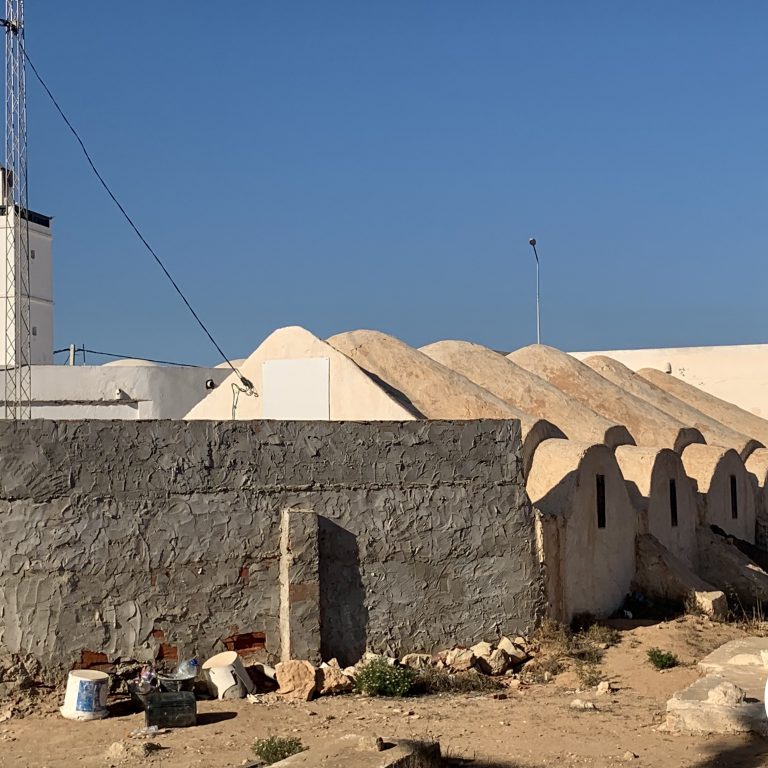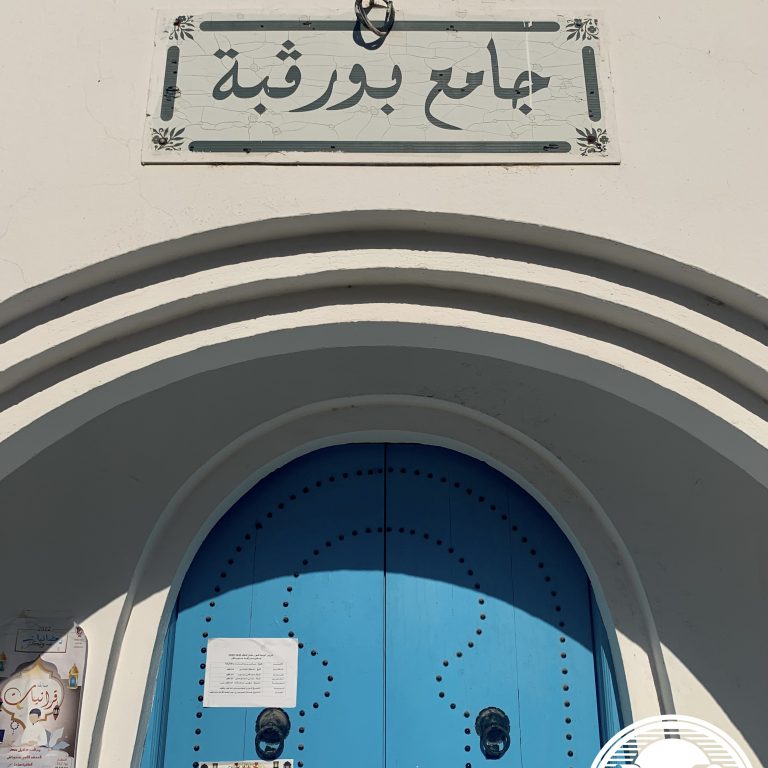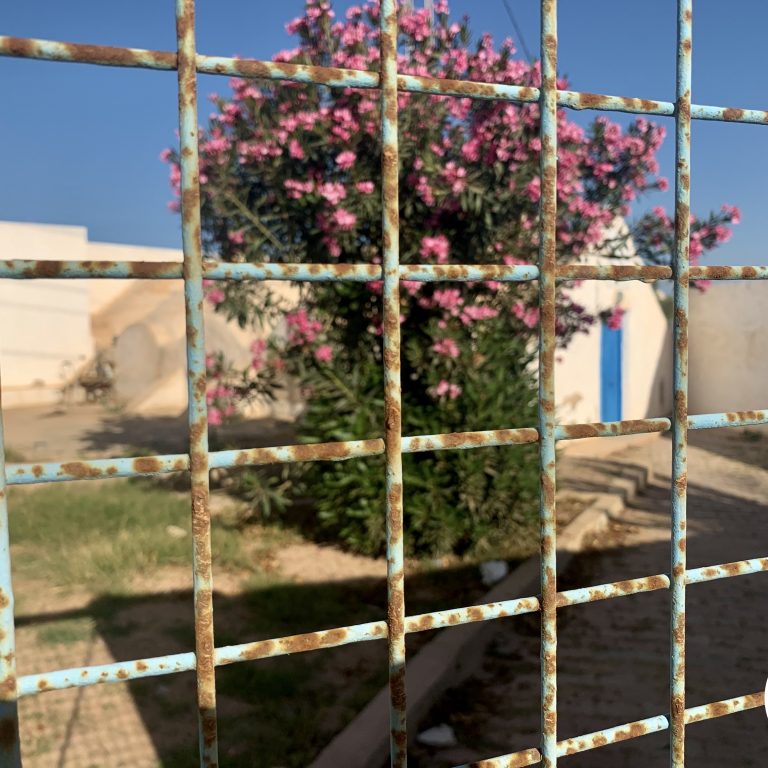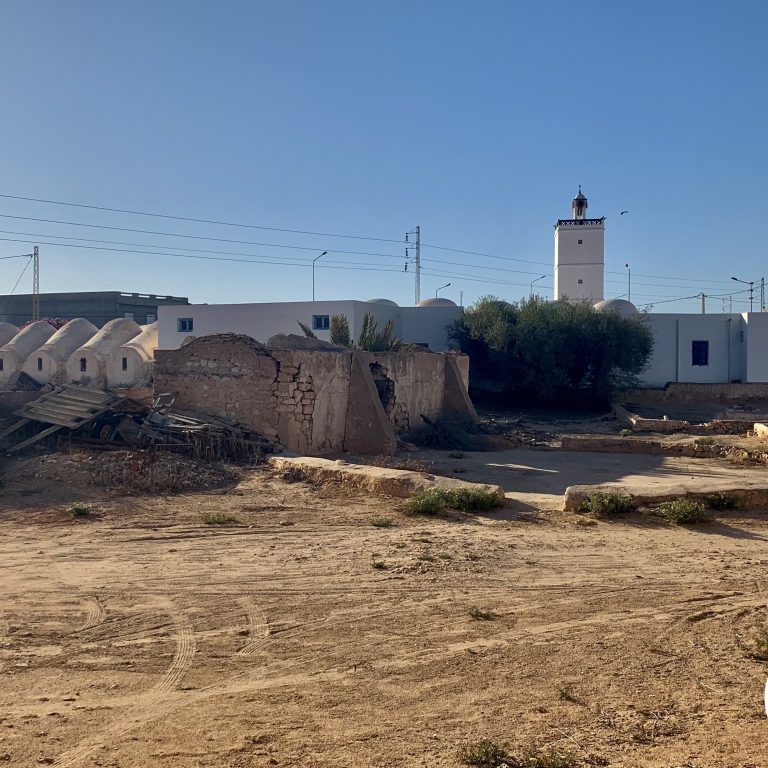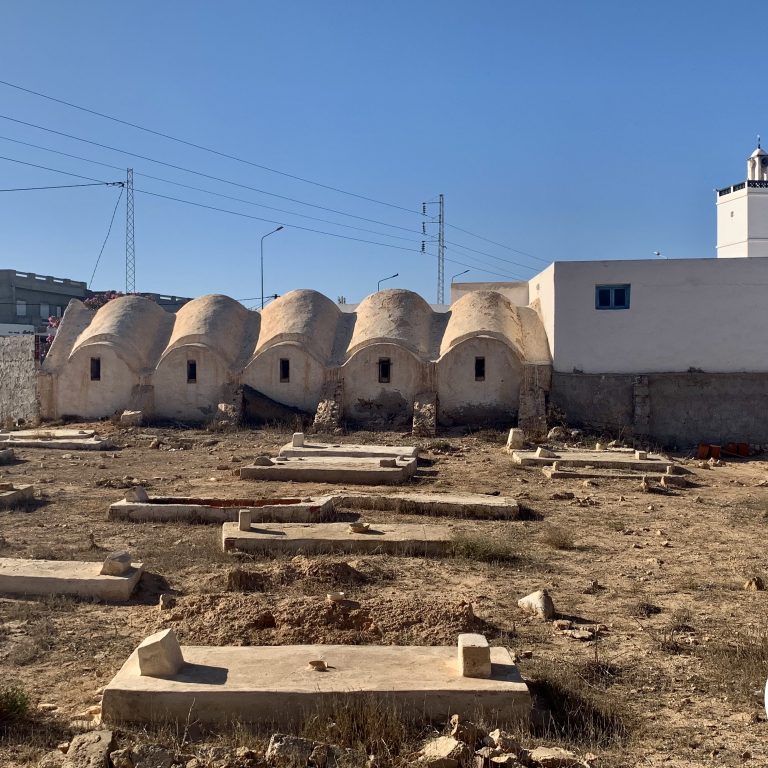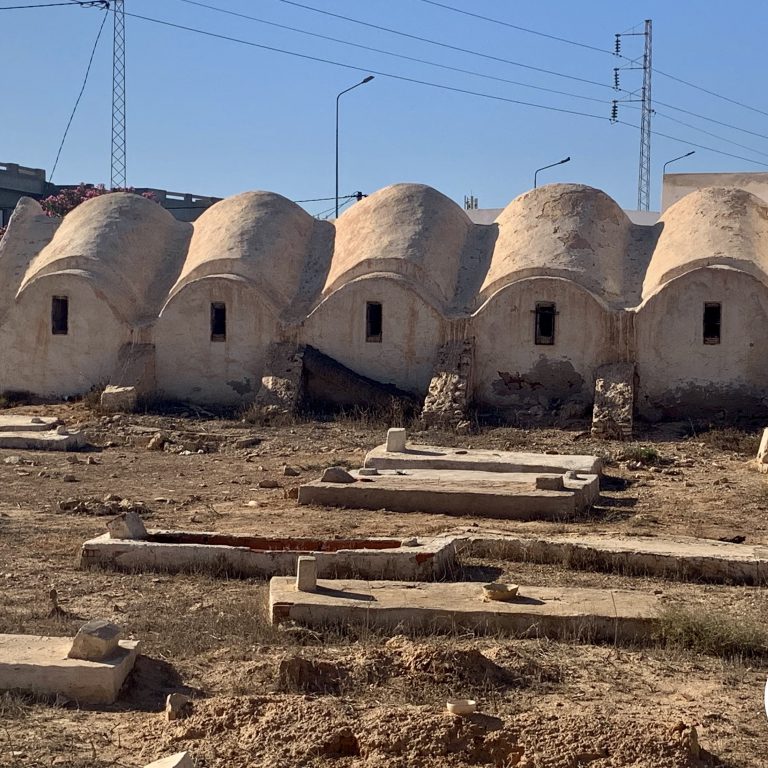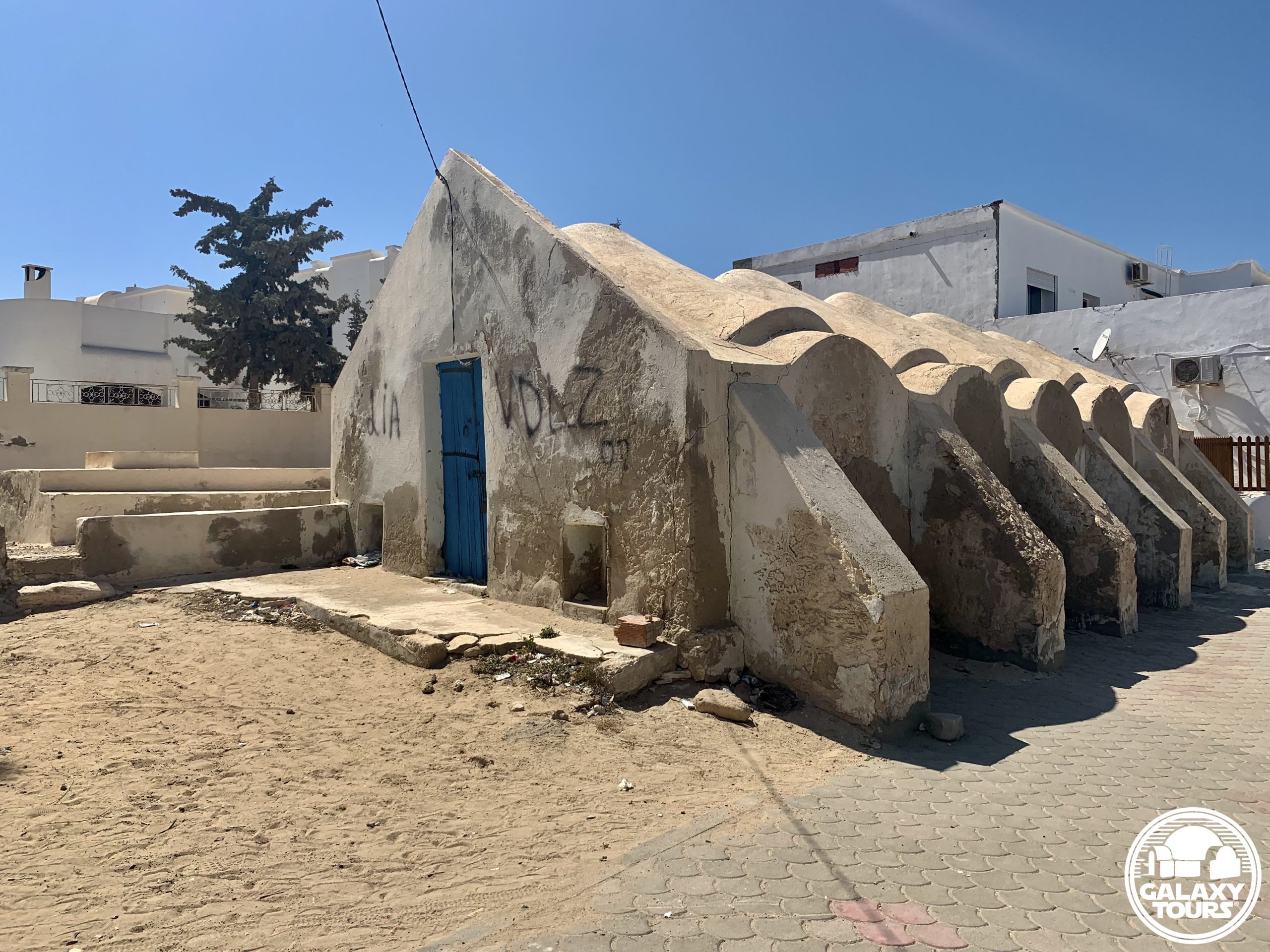
Hanout el-Aouina
OVERVIEW
Site: Hanout el-Aouina workshop
GPS: 33.882018, 10.855994
Location: Houmt Souk, Médenine Governorate, Djerba island, Tunisia
Description: Djerban wool weaving workshop (abandoned) (18th century CE)
Star Wars recce:
Episode IV – Tunisia (November 1975)
Source: Original recce photograph (Barry)
Star Wars scouted set concept:
Mos Eisley | Cantina (exterior)
Star Wars connection discovery:
Galaxy Tours (13 May 2022)
Name: Built in the 18th century CE by the Seoud family, the name Hanout el-Aouina in Tunisian Arabic means “the plum workshop,” suggesting the presence of a prominent plum tree in the immediate vicinity in former times.
Limited space: Situated in a compact area along the busy Avenue Habib Bourguiba near the Houmt Souk city center, securing adequate production space at Hanout el-Aouina would have been highly problematic, suggesting that likely only minimal consideration was given to transform the workshop into the Cantina.
Houmt Souk: Although unconfirmed, several unidentified recce photos from John Barry’s collection might possibly conclude that the Episode IV recce team also scouted various market streets inside the Houmt Souk city center in the general vicinity of Hanout el-Aouina.
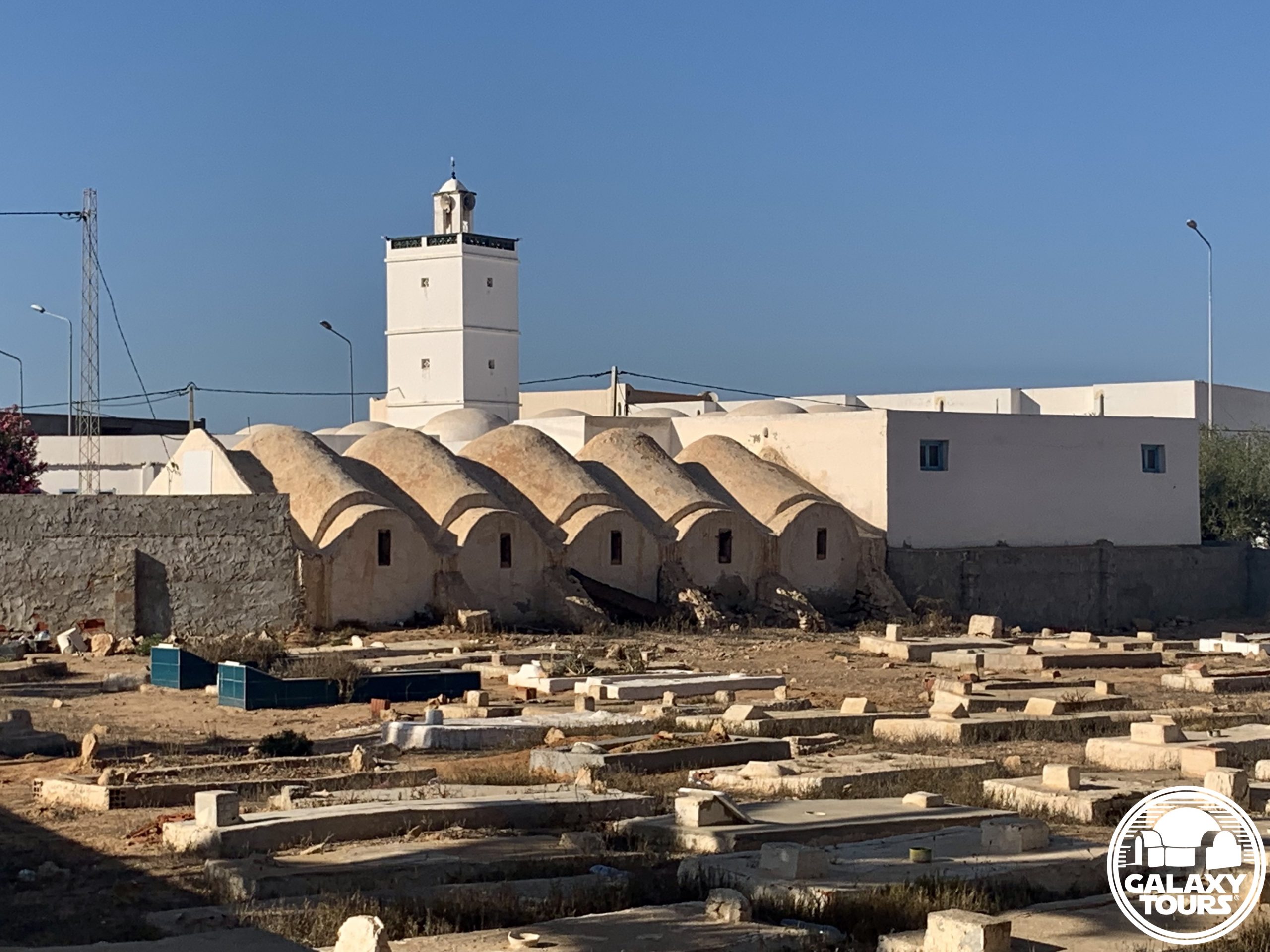
Bouregba Mosque
OVERVIEW
Site: Bouregba Mosque complex
GPS: 33.746187, 10.920452
Location: Sedouikech, Médenine Governorate, Djerba island, Tunisia
Description: Ibadi complex (late 19th century CE)
Star Wars recce:
Episode IV – Tunisia (November 1975)
Source: Original recce photograph (Barry)
Star Wars scouted set concept:
Mos Eisley | Cantina (exterior)
Star Wars connection discovery:
Galaxy Tours (13 May 2022)
Drive-by: Bouregba Mosque complex includes a mosque, wool weaving workshop, and cemetery. The focal point of the quick drive-by recce visit was certainly the weaving workshop. The close proximity of the cemetery to the workshop likely designated the site unsuitable for filming from the start.



